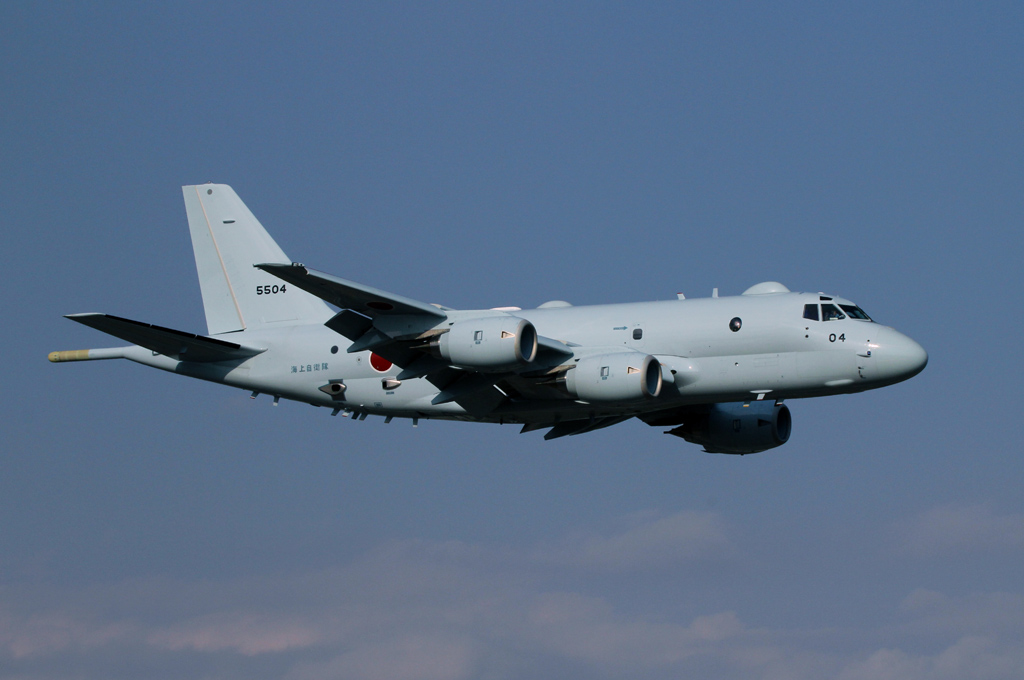
SHAH ALAM: The One That Got Away (TOGO). As we wait for the funding of the MPA in the next several years, Malaysian Defence can now reveal that the contract for these aircraft would probably have been signed at LIMA 19. That said it was more likely to happen if the former government had prevailed in the general election as it was approved during its time.
As the selected aircraft is being considered for the rebooted programme I will not name it here lest I will be accused of shelling for the company (I am not though I am pretty sure some will say so).
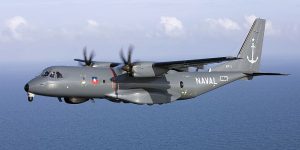
Chilean Navy C295 MPA. Airbus
For the record the aircraft being considered for the rebooted MPA programme are the Airbus C295, Boeing P-8, PTDI CN235, Kawasaki P1 and the Leonardo ATR-72MPA. The Bombardier Q400 MPA should also be in the running though I am not sure which version is being offered for RMAF.

Despite having to consider the previous selected aircraft in the rebooted programme, RMAF, I was told was looking at all possibilities. As for TOGO I was told it was approved by the BN government ahead of LIMA 17.
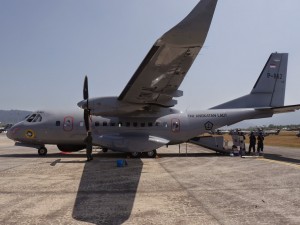
However, there was a delay in selecting the platform which meant that the specifications were not finalised until after the 2018 budget had been approved by Parliament. This meant funding for TOGO could only be made available until the 2019 budget although the programme had been approved. Please note that the practise of approving a programme without funding are normal (even for other countries though they normally announced the deadlines for them) so do not go off tangent on this.
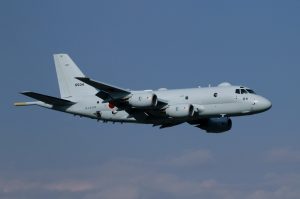
Then came the May 9 general election with the Pakatan Harapan coalition taking over the government. Despite, this I was told that negotiations for TOGO continued with the plan to have it funded in the 2019 budget.
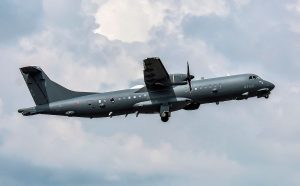
The negotiations stopped after the new government announced a review of all contracts – signed and forthcoming – with the Defence Ministry. Shortly thereafter TOGO was cancelled as it was decided that it will not stand up through the scrutiny of a review as it was done through direct negotiation (it was SOP for the previous government) instead of an open competition favoured by the current government.
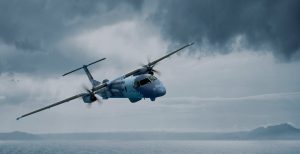
As the MPA requirement was still valid, it returned into military’s wishlist waiting for another day for its revival. It was several months later ahead of LIMA 19, the RFI for the MPA and others were issued by RMAF after the Defence Ministry decided it could go ahead to seek the best aircraft in open competition to meet its requirements under the long term modernisation plan, CAP 55.
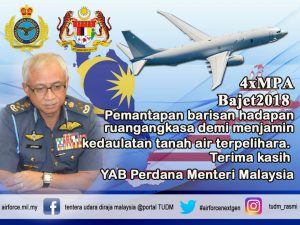
–Malaysian Defence
If you like this post, buy me an espresso. Paypal Payment

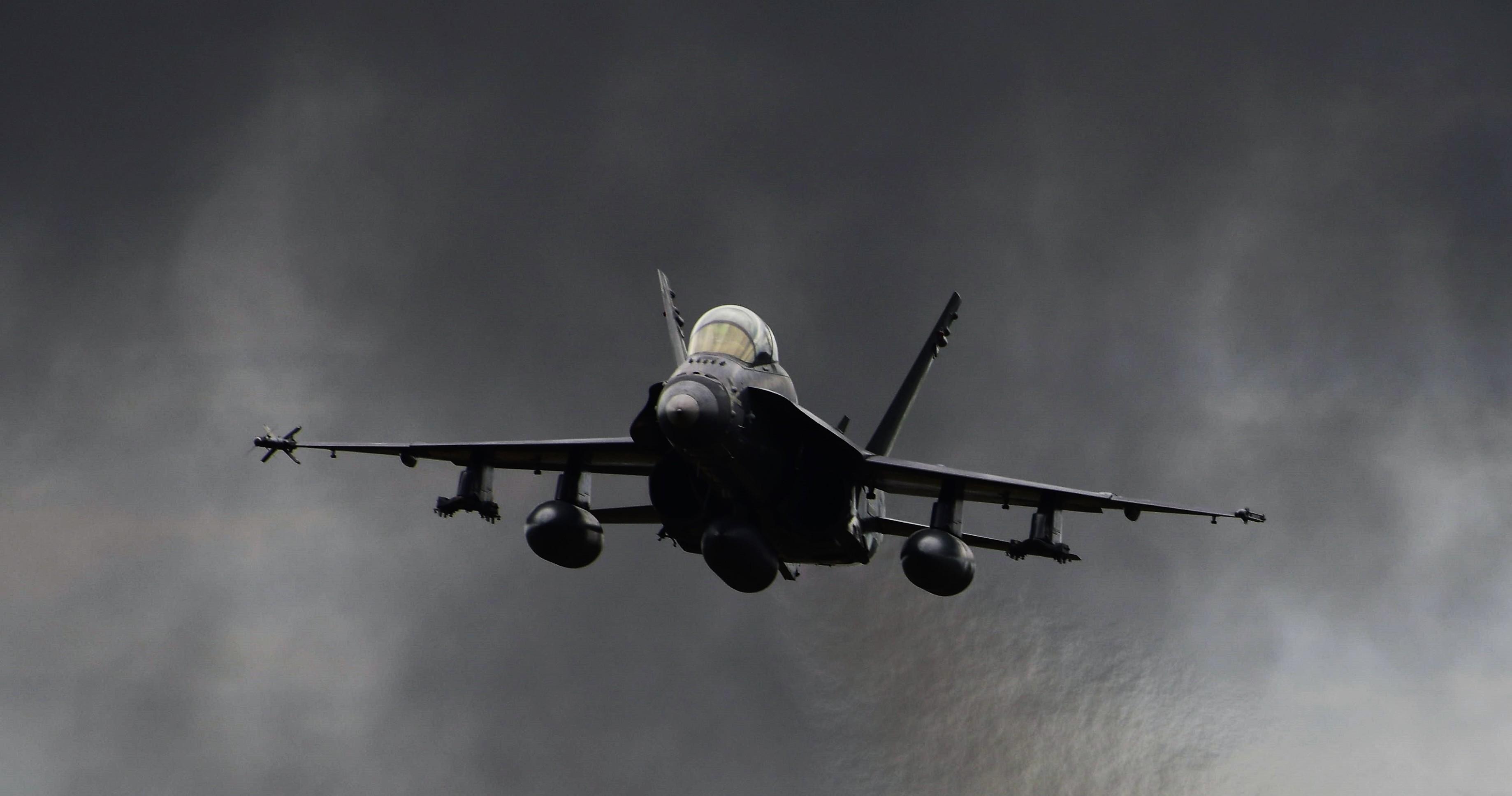
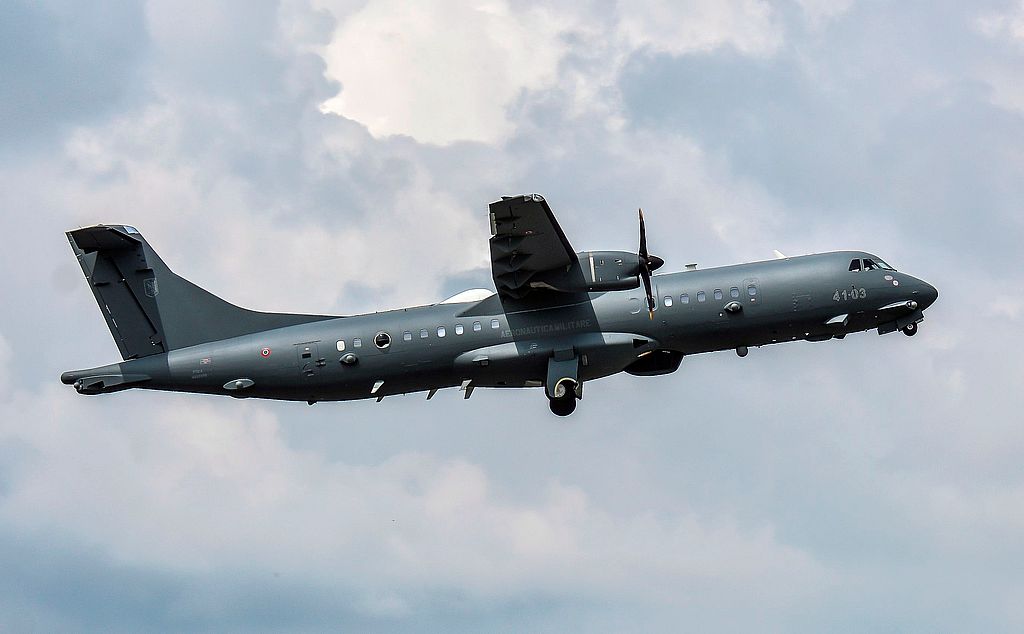
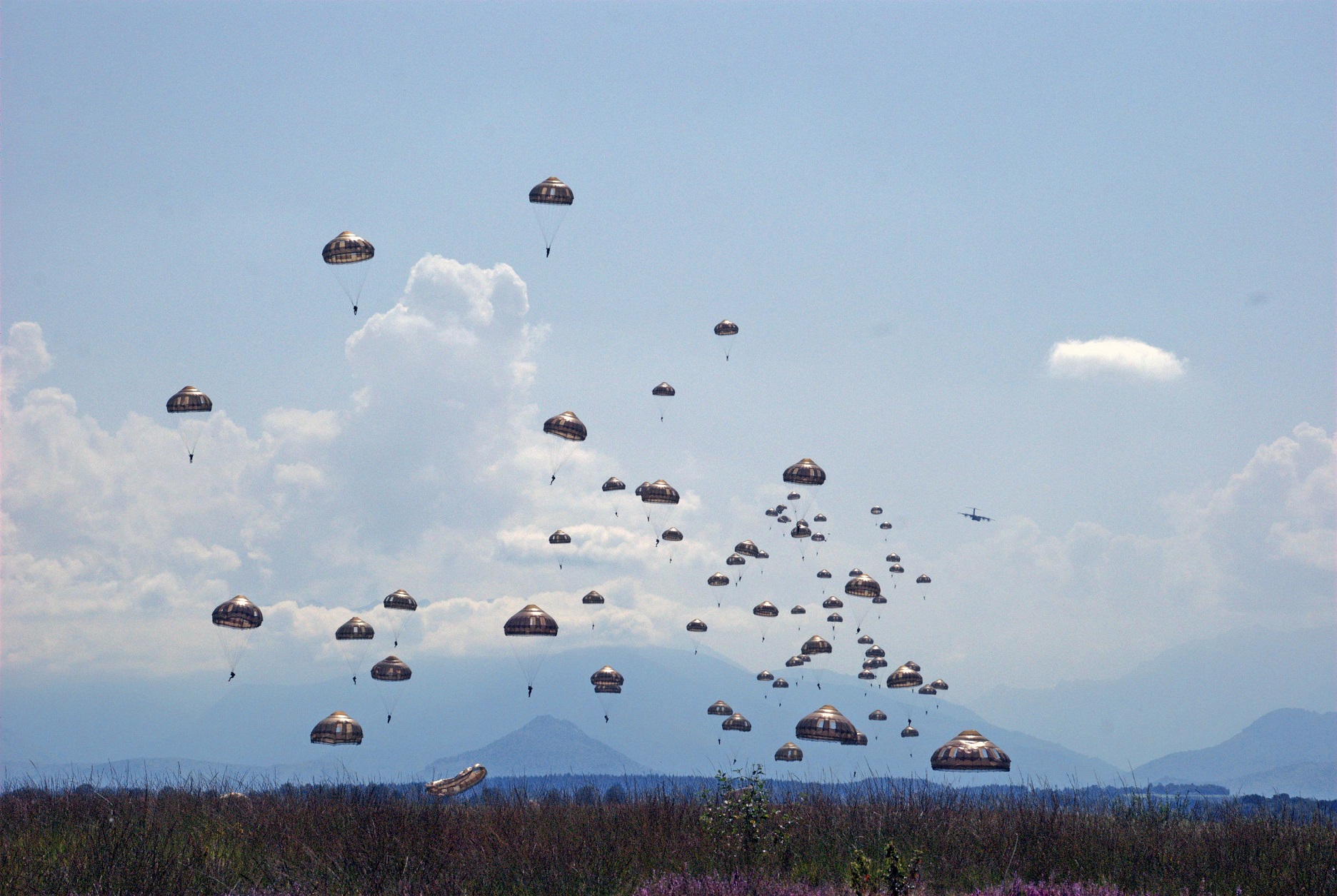
IMO what we can do with the rebooted MPA programme is to look beyond platforms and into the specific mission systems.
Probably we can have RFQ to mission solution providers / systems integrators to propose the best solution to be based on TUDM existing platform, the CN-235-220. The systems must not just be capable of doing its primary maritime patrol/ASW/SAR role, but must also be capable of secondary overland ISTAR support.
Some systems that could be integrated for our MPA
Mission System
– ATOS
– AMASCOS
– FITS
– Scorpio
– MSS 7000
– etc
EO Turret
– Wescam
– FLIR
– Euroflir
– ASELFLIR
– etc
Radar
– Seaspray 7500E AESA
– etc
Optical radar
– VIDAR
MAD
– MAD-XR
– etc
Sonobuoy
ESM
– SAGE
– etc
COMMINT
AIS
SATCOM
Air-droppable SAR Kit
modifications for the CN-235 itself
– in flight refuelling probe
– engine exhaust IR suppressor
– chaff/flare dispenser
– missile warning sensor
– observation windows
– tail ramp torpedo/sonobouy modular launcher
http://2.bp.blogspot.com/-zBhypDcZ18w/WPtidAZYNWI/AAAAAAAAy2E/PVuJhCg_uroYeVIxR2ZZ-k90vA75mT6yACLcB/s1600/Marco%2BPapa.jpg
New MPA for France
http://pbs.twimg.com/media/D9W25kGWsAEQitY.jpg
Can you give us a hint which one TOGO is….turboprop or turbofan?? European or Asia Pacific?? I am soooo excited. Difference now is we are not just getting MPA but MALE as well. Also is it true the JF 17 block 3 is the hands on favourite for the LCA.
Reply
No lah, its not JF17, it’s the twin seaters that’s the odds on favourite
I don’t understand, so did it get away or is it still in the hand. The first part of the article sounded like it won’t be materialising anytime soon but the 2nd part says there is an RFI so making it clear that the current administration are still committed to pursuing the MPA. On hindsight there’s pros and cons on open competition, if the MKMs were bought via open competition it would likely came with all Russian equipment. I just hope TUDM gets what they really want, and not something shoved onto them.
I watched “TOGA” as a kid. About a Luftwaffe pilot who became a POW but escaped back to Germany. Later killed in action in Russia. Black and white and 50’s or 60’s production.
My concern is not with what we buy but the need for no additional delays, the fact that a mere 2 and not the minimum of 4 (from an operational perspective) are bring acquired, the need for the MPA to be operated “jointly” and for it to have some level of network connectivity with other assets.
I’ll be very surprised if they come fitted with MAD and torps; realistically this is unlikely to happen. Even a chaff/flare dispenser is unlikely : by and large, most MPAs are not fitted as such unless there is a clear need/threat (I’m not suggesting there is zero need).
At this stage the RMAF has a pretty good idea as to what would suit it requirements, how it would like to fit it out and how much the government is willing to allocate. The problem is that the government might have other ideas as to what should be selected.
No lah, its not JF17, it’s the twin seaters that’s the odds on favourite…..then must be YAK-130 mitten then……2 seater n 2 engine.
Reply
There are the KAI FA-50 and Leonardo M346FA as well…and even the L-15s…
@ azlan
I think that is why a different kind of thinking is needed.
I think the example with MMEA OPVs is a good one.
The government initially approved the budget that is supposed to be enough for only 2 OPVs. With the budget approval, MMEA went around and asked for the best offer for the approved budget. What MMEA got is an offer for 3 OPVs for the budget.
So in the MPAs case, yes the budget approved probably enough for just 2 brand new MPAs. But focusing on systems to be built into existing aircraft would theoretically get the ideal 6 (IMO) MPAs.
…. – “I think that is why a different kind of thinking is needed“”
Irrespective of whether a “different kind of thinking” is needed we can safely say that RMAF by this stage has a pretty good idea as to what to put on the MPAs and what it can realistically afford based on the allocation likely to be approved.
Yes things can undergo a slight change in the future : RMAF can continue to make a case for 4 platforms and will continue to look at the most cost effective options but as it stands approval has been only granted for 4 and the RMAF has to plan accordingly.
Perhaps is better to temper expectation. Maybe theres a need to buy something or else LIMA 21 would have less than 402 foreign companies participating. Sorry my pessimism but theres still.projects thats not delivered.
Thank you very much for your continued efforts to keep us all updated.
Anyhow we need to understand that there is currently a few concurrent programmes for that need to be prioritised for the remaining RMK11 2016-2020 and RMK12 2021-2025 budget.
1. Light Combat Aircraft / Lead-In Fighter Trainer
2. Maritime Patrol Aircraft
3. Ground Air Defence Radar
4. Medium Altitude Long Endurance UAVs.
5. Intrim MRCA (used Hornets)
Of the above, the biggest cost would be the LCA/LIFT, and if you want to have everything of the highest specs and brand new (except obviously the hornet), I don’t think there will be enough budget for all.
In all probability, the LCA/LIFT programme, if it is done in entirety in 1 Rancangan Malaysia, would consume 50% of the available development budget.
The average cost if going for all new stuff in the quantities that has been said publicly:
36-40x LCA/LIFT 1400 million USD
2x MPA 100 million USD
3x Ground Radar 100 million USD
3x MALE UAV 100 million USD (equals to 1 system)
Would all the above be affordable? Arguably yes. But there is a big compromise in capability of the MPA and MALE UAV requirements. There would be a need to buy additional MPA and MALE UAV in RMK13, which IMO should concentrate on next capabilities such as AWACS and EW aircraft.
Alternatively what can be done is having some capabilities used, or in case of the MPA, integrating MPA systems into existing TUDM aircraft. IMO we should go for the best for LCA/LIFT and Ground Radars, convert our existing 6x CN-235 into MPAs, and getting used for MALE UAV and of course the Hornets.
But where can we find used UAVs? The answer is US Excess Defence Articles (EDA). They have just retired their MQ-1 Predator UAVs and replaced them with the bigger MQ-9 Reaper. Getting EDA means we can have a bigger quantity of UAVs, and IMO this is important as we need extra units to take into account potential UAV losses. Due to the remote control, and long flying time, UAVs have considerably higher crash rate compared to manned aircraft. If we just have 3 UAVs, we cannot afford to crash even 1. There are some concerns in exporting the Predator, but it can be reconfigured to remove the attack/missile functions. IMO highlighting the need for the EDA Predator for South China Sea security and freedom of navigation would sway US to release the predator for malaysia.
Reply
US is allowing MY to buy the Sea Guardian as it had relaxed the rules for armed drones. GA cannot even talk to us on the Sea Guardian if the rules are not relaxed in the first place.
The problem with buying the older Predator is that the US is no longer using them hence we will not get their support in the long term. Although as a stop gap measure /training use it is doable.
@ marhalim
To be exact USAF is no longer using them.
Italy, Morroco, Turkey and UAE is still using them. There are rumors that there is also 2 used by the philippines.
No longer used by USAF can also be an advantage to us, as we can get plenty of excess spare parts. In total 360 units have been built, so probably we can ask for enough spare parts for us to use for 10 or more years.
Probably we can ask for 9x Predators, for 3x Systems (2 operational, 1 training/standby) with probably 4-6 more for spares.
This is just my perspective, but if we are only getting 2 MPA for the time being, the ATR 72 will be the best choice. Being a commercial aircraft, parts and support will be the easiest to access. Not to mention the availability of skilled personnel for servicing. Also might get a good package if we add the M 346 too as they are from the same manufacturer.
In addition to command issues (making sure they are operated jointly and ensuring those who need the info/intel get in on time with minimum delay); the use of Unmanned Aerial Systems will also result in the need to coordinate their operations with Maritime Patrol Aircraft. They must be no duplication of efforts and both have to complement each other.
Ideally a UAS will also be able to share intel with a MP; irrespective of the fact that the UAS might be under the operational command of a Joint HQ and the UAS under a command : “jointness” and “connectivity” is what will deliver the results.
It’s great to discuss what we should buy and what we can buy but it’s equally vital that we come up with ways to maximise the capabilities offered by whatever we eventually get.
Armed UASs have their use but in our context what we need urgently first are UASs for their ability to conduct “ISR”. The main challenge we currently face are ISR assets in sufficient quantity to enable all weather continuous real time coverage. Having a UAS with a strike capability is secondary in our current scheme of things.
Also, having a armed UAS is one thing, having the needed ROEs which enables a armed UAS to take out a target in a time sensitive engagement is another thing. No point in a armed UAS having identified a target that is 3 minutes away from reaching international waters, if doesn’t have needed the ROE in place to enable it to immediately release ordnance or if approval takes 9 minutes.
The problem is there’s bureaucratic, legal and political factors involved; especially when one is operating in a peacetime setting. Even at the height of the kidnaps in ESSCOM a few years ago we did not have the ROEs needed. The Chief of RMN asked for a “shoot on sight” (after contacts had been identified as hostile) policy but the politicians said no.
If indeed the LCA gets funded in the next Malaysia Plan: it’s unlikely that MRCAs (even pre owned ones) will be funded. This requirement will probably have to wait until the 13th Malaysia Plan. The problem with the pre owned Hornets (even if the government and RMAF was agreeable – a major “if”) is by the time of the 13th Malaysia Plan; the pre owned Hornets will be even older than they are now.
Also by 2026 our finances could be in a better position (a skeptic could say otherwise) and our priorities or sense of urgency might have changed.
Sure the list is long and compromises have to be made but it’s a mistake only going for 2 MPAs. A mere 2 hardly provides any operational flexibility and if we buy a follow on 2 several years later; there is no guarantee they’ll be fitted with the same systems as the initial 2; unless of course we bring the initial 2 to the same standard. Having a fleet of just 4 MPAs but fitted with different systems will be silly. I believe the RMAF still has a requirement for follow on PC-7 Mk2s. Or has this been shelved? In the coming years the guided guided ordnance used by the Hornets and MKMs will also have to be relifed or replaced.
“3x Systems (2 operational, 1 training/standby) with probably 4-6 more for spares.”
3 to use and 6 to keep for spares won’t fly with those oblivious ministers who don’t understand the concept of “uptime”, “cannibalisation”, “obsoleted”, & “no longer supported”. They would expect to use all of them or majority should be in operational use.
Going off on a tangent here… are there any European manufacturers that are currently supporting the Dornier 228 as a maritime patrol aircraft? I believe Bangladesh 🇧🇩 is using them in that capacity.
Secondly, and interestingly, I find the Austrian built Diamond DA-42 (& the newer derivative DA62) listed in the top 10 list of capable modern maritime aircraft. The specs that saw this light aircraft included in the list with current heavyweights like P8, K1, C295, Leonardo ATR & CN235 is probably due to the list of equipment it carried. It had a long loiter time and can manage a 150nm range offshore which should just be sufficient for covering our EEZ. Almost like an ATR-42 except for its smaller footprint. Perhaps a smaller aircraft should be considered after all. BTW, its proprietary engines run on diesel :-). Just a thought. Rather, a daydream.
Reply
The Dornier, Diamond and even Twin Otters are more suited for the Coast Guard role
joe,
The RMAF working paper that was presented in the past – to make a case for MPAs – will have mentioned in detail why 4 are needed, why buying less than 4 will lead to issues and what can be done with just 2. It will also have stated that because only 2 will be bought; the Beechcrafts will have to continue in service. The reply to the RMAF could have been along the lines
of : “yes we fully understand you need 4 but you’ll just have to make do with 2 first and given that you’ve operated the Beechcrafts for so long now, operating then for a few more years shouldn’t be an issue”.
It’s not a question of the Minister or senior MINDEF officials (uniformed or civilian) not understanding but a really a question of how much the Economic Planning Unit and others are willing to allocate. For all we know the current Defence Minister might even be convinced of the need for 4 and will make his opinion known but ultimately it’s not his decision.
It might even be a case of the EPU or MOF agreeing on 4 but someone else deciding otherwise. Or the case of someone deciding that cheaper to buy UASs can compensate for the fact that only 2 MPAs are bring acquired.
Taib,
With the exception of the P8, which we realistically can’t afford; all the types we are looking at have the ideal range, endurance and internal space (for the crews and equipment) for what we need. Plus the space to add on stuff at a later date if required: internally and externally. The availability of sufficient power supply is also a vital consideration.
Anything smaller will be cheaper to buy, operate and maintain but will face limitations : a situation we’ve long faced with the small Beechcraft in which weight and power issues have been a problem; not to mention crews having to be squeezed in such cramped conditions for hours on end
@ taib
Dornier 228 is now mostly supported by RUAG, with airframes contracted out to india, with final assembly in europe.
Diamond DA42/62? If you are comfortable of sitting still for 10 hours with no lunch or bathroom breaks then it is an airplane for you.
@ azlan
Yes information command and flow is important. IMO in the regard of maritime situational awareness there should be a central information room ala a ship CIC or tudm SOC with MMEA, TLDM and TUDM personnel manning it for each maritime area ie one for selat melaka etc. I think we have something similar for ESSCOM. So all radar, electronic surveillance, AIS, video feeds go to one place, deciding on which asset to monitor which situations.
On the hornets. It is either we agree to take them in the next 3 years, or not take them at all. RMK13 is too late, and will be detrimental for the future MRCA post 2030. IMO in RMK12 we need to get both LCA/LIFT and Hornets to recapitalise and beef up our fighter capability.
On the MPA, The reason why I would run with the available budget and convert the CN-235 instead of getting just 2 new MPA is that there is no guarantee there will be another 2 MPA later, and big possibility of it could be a totally different platform instead.
On the PC-7 Mk2. I believe they currently have the number they need. With computer and simulator-based training and better crop of students nowadays they are comfortable with the 21 remaining trainers, although probably a few more wont hurt.
@Azlan
Which is why we better pray hard that someone making those decision are aware of all those I mentioned and heed RMAF advice. But from what I see in the past, those in the new administration have very shallow knowledge in that aspects and are suspicious of men in uniforms.
About whether to get UCAV or not, we should first consider the moral implication of remote killings and the mental effects to the drone operator. Gathering intel and surveillance is one thing, remotely firing against targets that might turn out to be civilians is another thing. Even with US superior intel capability, they still screw that up more than once. While the US don’t seem to have a problem with that, the Forces need to think of the effects & implications, plus weigh the risks, pros & cons of using a remote killing device.
@Azlan
Understand the ‘toilet limitations’ of the Diamond. 😁Maybe a toilet break after 4-6 hours of flight? The US Border Patrol along New Mexico and Texas on the Rio Grande still use them. The Dornier’s a bigger aircraft though… and thanks for the heads up on RUAG. I feel the Bangladeshi already have a great maritime aircraft in the RUAG Dornier. Just an opinion…
Reply
Thailand also used the Dornier. It was likely that we would have bought the Dornier for MMEA if not for the decision to buy the CL415s
@ joe
We are in no business of killing anyone remotely.
If we do need to kill our adversaries by air, that would be the task of our fighter aircrafts.
UAVs in our context should only be for ISTAR (intelligence, surveillance, target acquisition, and reconnaissance)
Actually, I think another crucial need is better armed response.
MPAs and radars give us more/better eyes on the area, but eyes can only call in other reaction forces.
Patrol boats give us enduring long-term presence, but requires more numbers in order to respond to an incident within a useful response time.
Perhaps what we actually need are helicopters, armed helicopters which can respond quickly and engage pirate boats.
@ chua
Response to pirates is a requirement, but right now something probably important in ESSCOM areas.
Our crucial need in peacetime situation is
1. Enduring presence on location.
2. Better situational awareness.
If China coast guard can be on location off sarawak coast for months on end, we need to have the same capability too. That calls for more ships with long endurance to be on station for MMEA. The presence of MMEA ship will be a visual deterrant for foreign fishing ships and a comforting sight for malaysian fishermens.
Some of the ships other than OPVs can be something that can be at sea for weeks or months but requires minimum energy use.
http://www.batliv.se/img/news/800_Rainbow%20Warrior%20III.jpg
https://cdn.xsd.cz/resize/10abc47ca0e53437b5f0f54fbdafd40f_resize=1024,512_.jpg
Chua,
We need helicopters, patrol boats. MPAs and UASs; all working in tandem and complementing each other. No single platform is “better” and no single platform should be doing its own thing by itself.
It also depends what we’re doing, the circumstances and where. Are we tracking something off Layang Layang or are we dealing with a small boat manned by kidnappers/militants/bandits off Lahad Dato? As I’ve mentioned in the past, one of the roles I see the Little Birds performing in ESSCOM is as a fast reaction asset and coastal surveillance.
joe,
Read carefully what I wrote.
You questioned whether Ministers are aware : they are. They know the know the issues the MAF faces; whether with the need to cannibalise stuff to get ships to sea, what happens when maintenance contracts are delayed, etc. The problem is that Ministers can decide certain things and can make recommendations but the final decision lies elsewhere.
Also although politicians should heed the advice of the armed services; there must (and is) a check and balance. The armed services do their job by pressing for their requirements but they may not be aware of aspects that may determine what can or can’t be bought. There is also the problem of in service fighting where each of the armed services are competing for funding and trying to convince the politicians that they’re need are more vital than the needs of their sister services.
As I’ve tirelessly pointed out in the past (many come to the wrong conclusions and are quick to pass judgement on the MAF) : it is the government’s duty of care to ensure the armed services have what they need, also to a realistic indication as to when funding can be provided and to also inform in a timely manner if funding is not forthcoming. This enables the armed services to plan accordingly but alas at times there is zero indication.
It’s totally wrong to say the Yanks “don’t have a problem with civilian casualties” – of course they do. Dead civilians make for bad press and alienates the population. The problem is that people have to work with the intel they have and at times the risk of a few dead civilians is one they’re willing to take if means a important target is taken out.
If you were a General and your men were at risk from IEDs; would you object to a UAS strike on insurgents placing IEDs because there were a few civilians in the area or would your first concern be for your men? It’s is morally right? No but countries at war have to make tough decisions. There were kids and children at Lahad Dayo with the intruders. We still launched air strikes.
There are also times when the enemy intentionally takes advantage of civilians for political gain and at times the Yanks make genuine mistakes. We also have cases where countries couldn’t give a damn about civilian casualties; i.e. the Russians in Chechnya and the Saudis and Emiratis (both our good chums) in Yemen.
Again: Our first first priority is for UASs to perform ISR. If and when we ever get armed UASs, we’ll also need clear ROEs in place.
@…
Then all these talk about getting armed UAS/UAV/UCAV is moot. Better we get UAVs that are all about gathering intel and then send in conventional forces if threat were detected.
Reply
Its not moot as the MALE UAVs being considered/looked at are already fitted for weapons so thats one issue we will not be looking at in the future. As of doctrine of course that’s being looked at. Anyhow it is more easy to kill someone remotely rather than face to face
A ship’s endurance is dependent not just on fuel and food but also water. Smaller ships don’t have water distillation systems but like all ships have food and water reserves that are only used if the ship has to remain at sea longer than planned.
Another issue with MMEA ships is that most lack the needed sea keeping for extended ops in the Spratlys. Heavy storms can beak out there at short notice.
@ azlan
Watermakers can be installed in boats as small as the CB90.
https://www.defender.com/images/products/katadyn/PowerSurvivor.gif
Need more stable ship at slow speed or static at sea? Gyro stabilizers can be installed.
https://www.powerandmotoryacht.com/maintenance/adding-a-gyrostabilizer-to-your-boat
Ships bigger than 50m would be more stable in open sea, right now not many MMEA ships is bigger than that.
Advantage of armed UAV is instant response.
Reply
Yes especially when patrolling ESSCOM AOR
joe – “Then all these talk about getting armed UAS/UAV/UCAV is moot”
You still don’t get it?
Nobody’s saying we will never have a need for armed UASs or that we should never get them.
Again : at the moment priority is to get UASs to perform ISR in our EEZ and along the periphery.
If we happen to get UASs that are able to be armed then good and if there is reason for an armed UAS to engage a target then good but engaging targets remotely with a armed UAS is not a priority at then moment and is not the main reason why we are looking to get UASs.
The problem with using armed UASs as a kill platform is not only will we have to have proper ROEs but also proper guidelines/SOPs in place because of the legal, politic and bureaucratic issues involved: especially given that we are operating in a peacetime setting and that mistakes can happen.
“About whether to get UCAV or not, we should first consider the moral implication of remote killings and the mental effects to the drone operator. Gathering intel and surveillance is one thing, remotely firing against targets that might turn out to be civilians is another thing…
Then all these talk about getting armed UAS/UAV/UCAV is moot.”
These are deeply flawed arguments. If this is the way technology and the modes of waging war (and peace, and everything in between) are moving, how is it “moot”?
We would be silly not to move with the times and not to appreciate the implications of the capability- whether on the giving or the receiving end- even if we have no current intention or requirement for arming OUR drones.
If the UAVs that we acquire can be armed or have an upgrade path for weapons, more power to them. We can always operate the things without arming them for every flight.
As to the “moral” dimension you raised, there have been times when say an army unit has had better SA than a UAV, and there are times when it has been vice versa.
There have also been times when ground units have depended on UAVs for overwatch with their sensors and outright CAS to come out alive.
To say that UAVs shouldn’t be armed because they will always have worse SA is silly.
joe – “the mental effects to the drone operator”
That’s assuming the operator later discovers a mistake has been made. If however the operator is aware that the strike killed a couple of civilians but also some insurgents who were minutes away from attacking friendly troops: then the consequences are something he’ll be willing to accept.
If we want to talk about “moral effects” then we can even go further. What will be the “moral effect” of a soldier who with his rifle has just splattered the brains of an enemy soldier 20 metres away or the “moral effects” of a soldier who has just fired a RPG on an enemy APC and sees the surviving crew in flames trying to exit their vehicle?
Before we jump the gun and come up with conclusions based on personal opinions rather than facts; first we must fully grasp how a UAS (armed or not) operates, how it can contribute to the overall effort and how in our context UASs (armed or not) will be employed. We also have to take note that most of the time a UAS has pretty good or superior SA to troops on the ground and that a lot of mistakes made was due to human error.
To all,
Armed UAVs IMO are only beneficial in one situation, which is if we are in a long term insurgency war. Where the insurgents are clearly is our enemy and we are monitoring and tracking them to destroy/kill them. For example if the technology of armed UAVs is around during the communist insurgency, that would be a good use for an armed UAV.
But in a conflict where the adversary have MANPADs, SAM and jet fighters, a UAV is not a survivable platform.
And in normal peacetime situation, against say IUU fishing, smugglers, refugees or pirates there is IMO no clear situation where we can substantiate the need for kills with UAV.
To all,
Armed UAVs IMO are only beneficial in one situation, which is if we are in a long term insurgency war. Where the insurgents are clearly is our enemy and we are monitoring and tracking them to destroy/kill them. For example if the technology of armed UAVs is around during the communist insurgency, that would be a good use for an armed UAV.
But in a conflict where the adversary have MANPADs, SAM and jet fighters, a UAV is not a survivable platform.
And in normal peacetime situation, against say IUU fishing, smugglers, refugees or pirates there is IMO no clear situation where we can substantiate the need for kills with UAV.
“You still don’t get it?”
I was just following your conversion with … about whether to get armed UAVs.
And there’s no moral effects when killing an enemy combatant but there’s definitely moral effects if the kill turns out to be civilians because there was no positive ID.
“Its not moot as the MALE UAVs being considered/looked at are already fitted for weapons so thats one issue we will not be looking at in the future.”
Even the US took years to develop their armed drone doctrine to buildup failsafes yet it still isn’t foolproof. And that’s on top of years of unarmed drone usage. If we straight jump to armed UAV usage, I sure hope we have better failsafes to prevent trigger nervous operators.
joe – “I was just following your conversion with … about whether to get armed UAVs“”
The conversation very clearly/categorically stated that the ability to conduct remote strikes using armed UASs is not the main reason why we getting UASs. At the same time nobody’s saying we should never get armed UASs or that we’ll never have a need for them.
Can’t get clearer than that. It’s one thing “following” a discussion; another thing going around in circles about the same thing which has been discussed before.
joe – “moral effects if the kill turns out to be civilians because there was no positive ID”
So? What about the “moral effects” of a pilot or an infantryman if it turns out that actions they undertook led to the death of civilians? If we’re going to worry about “moral effects” and the potential for mistakes then we must as well not buy anything at all.
There were women and children with the intruders at Lahad Dato. If we follow your line of reasoning we should never have resorted to air strikes due to worries about the “moral effects” on our pilots.
joe – “we straight jump to armed UAV usage”
Which is why we should have the needed command structure and ROEs in place – this has been discussed before, several times. Nobody’s suggesting we should “straight jump” into anything …..
joe – “ sure hope we have better failsafes to prevent trigger nervous operators”
You’re looking things through a very narrow lens.
In the majority of cases which involved civilian deaths; it was because of flawed or late intel or wrong decisions made under stress in time sensitive conditions; not because of “trigger happy operators”.
Don’t make it sound like operators have a free hand to engage what they like, when they like. The operators work under strict guidelines and ROEs. It’s not uncommon for them not to be able to take a shot unless certain conditions have been met. At times they may not want to take a shot but are overuled from above.
Also take note that it’s not uncommon for insurgents to place civilians in harms way for the political value and that it’s not only UASs that make mistakes but also manned platforms.
“moral effects if the kill turns out to be civilians because there was no positive ID””
UAV crew and infantrymen handle their mistakes differently for different reasons.
There’s no point in me repeating what others have covered, but my venture is that having skin in the game raises the urgency with which you employ a weapon and consequently your tolerance for causing civilian casualties.
Even when not personally threatened, infantrymen would have seen the consequences of enemy action upon friendly troops and others. UAV crew are less exposed to these bloody scenes, hence less exposed the necessity of doing their jobs and less convinced that their killing is “balanced off.”
It should also be said that USAF UAV crews are dissatisfied for some unrelated reasons. Pilots who signed up to fly are doing involuntary tours in UAV squadrons, for example. How does one balance that off against the burdens of military organisational culture- collateral duties, reduced independence, satisfying PME requirements, greater scrutiny and perfectionism from command and so on? These concerns abound in a non-deploying unit but are less pronounced in units engaged in combat or at least manned flight operations.
“And there’s no moral effects when killing an enemy combatant ”
This isn’t always true. Soldiers have hesitated to fire on enemy combatants. In the early years of WW2, a US study found that American troops hesitated to fire (and were unprepared to fight even for their lives) because they did not hate the enemy as much as their allied peers and at the extreme, did not consider the enemy morally capable of killing them. It came from their country not having been invaded, occupied, terror bombed and existentially threatened like the British and French had been. It recommended that troops, combatants and support troops alike, be exposed to the consequences of enemy action- visits to field hospitals, for example. In Vietnam there again came reports that fresh troops were not shooting at the enemy even in firefights.
If UAV crews need something to acclimate their morals, something like this might be part of the answer.
@Azlan
I think your confused between ‘trigger happy operators’ and what I said; trigger nervous operators. The former are rednecks who disregard the consequences of their actions. The latter are those cannot make a good, sound decision whether to fire or not. Moreso in urban areas whereby a slight hesitation can close the window and civilians might have already entered the kill zone when the missile is fired. Of course its uncommon (more like standard protocol), for irregular combatants to use human shields which is why sending troops with solid intel is the better option compared to bombing them out with drones.
@AM
IINM, the US Armed Forces have therapies for UAV pilots to placate their guilt and conscious, moreso when confirmed they had killed civilians. The best acclimatisation is having eyeballs on the ground (means solid intel on the targets).
Look, war is increasingly a networked affair. There is no getting around the fact that often, sensor operators, weapons system operators, platform drivers and mission commanders are different people in different locations.
Let’s not forget that a central purpose of unmanned systems is to avoid risking a crew.
And we haven’t even gotten to talking about systems that make an autonomous decision to fire. Those will be here shortly.
@…
It’s true that in peer conflicts UAVs are considered most useful as ISR assets. However that is due to the current (im)maturity of UAV technology. Future developments all foresee armed UAVs (whether ground, sea or air types) and Singapore especially expects to use them widely to pad out their manpower-scarce forces. They may be vulnerable to enemy fire but no more so than a manned vehicle would also be.
@joe
Collateral damage issues have always been a part of war, it is not a new phenomenon limited to drones and drone operators do not suffer from more of it than other soldiers.
The mere fact that PTSD counselling for drone pilots exists, doesn’t mean their job is more traumatic than others. That’s an erroneous logic leap.
In fact it’s well known that PTSD affects infantrymen more than pilots or even snipers as the latter do not need to get up close and personal with their kills.
@ chua
In malaysian context, IMO please stop using the term “peer” as if we are the most powerful country on earth. In our context our external security challenge can be divided into:
– regional powers – this is USA, China, Japan, Australia, India and South Korea
– regional neighbours – Self explanatory
– Non-state actors like Al-Qaeda, IS etc.
– IUU Fishing, Smuggling, Human Trafficking, Pirates.
In all out war, heavy electronic jamming, GPS jamming etc will severely restrict the use of UAVs. In malaysia’s case, UAVs would only be practically usable for the bottom 2 security challenge, and for day to day peacetime situational awareness tool. In full on conflict, it is IMO not a substitute for a proper LCA/MRCA with targetting and recce pods; AWACS and satellite-based imaging. Unless suddenly we are faced with a long term widespread armed insurgency, using UAVs for attack/kill is the least of our concerns.
Actually, Chua isn’t entirely wrong to use the word “peer”. It just depends entirely on the context. Should trouble break out over the Spratlys then obviously China isn’t a “non peer” opponent.
If however trouble were to break out say with Indonesia over unresolved territorial or maritime claims; then it would be a case of going against a “peer” adversary. Yes the TNI has made several advances over the years and enjoys several advantages over the MAF but when viewed as a whole or in entirety the TNI can still be considered a “peer” adversary.
In a full state on state conflict electronic jamming of UAVs is only part of the problem. When or if faced against a “non peer” or even a “near peer” opponent; one’s radios, SATCOM, radars, GPS, etc can be jammed or disrupted. Before even getting into firing range with it’s missile, a ship may find its CMS inoperable due to a virus. All nightmare scenarios.
Like the majority of countries, there is only so much Malaysia can allocate for electronic and cyber warfare. It also doesn’t help that like many countries Malaysia doesn’t have an established home grown industry it can fall back on. The minimum (which is what we’ve done) is to get a some level of capability and the required knowledge. The RMAF and RMN has EW centres and there has been various tie ups between the local industry and foreign companies. As part of the Jernas off set agreement, the Brits set up a joint EW school. The problem is that EW is a very niche area requiring steady long term investments which is harder to justify (compared to other areas which are more visible and have peacetime utility) in times of peace and restricted budgets.
Even the U.S. still has catch up to do with the likes of Russia which has long taken EW warfare to a different level and even when times were very bad; ensured steady investments towards EW. In terms of EW integration at theatre and operational levels; the Russians employ EW on a much larger scale – it’s part and parcel of the overall effort. Let’s not even mention the Chinese and advancements they’ve made.
From the recent IDEF 2019 exhibition in turkey.
Aselsan new ELINT/SIGINT modification on CN235. No further info as of now.
http://pbs.twimg.com/media/D-IslW8X4AAqZVu.jpg
We have 7 remaining CN235. If TUDM CAP55 plan does away with the need for them, probably we could convert most to MPA, and probably 1 to ELINT/SIGINT?
On paper yes but as I’ve pointed out, there is no interest on the government’s part to convert the CNs into MPAs. The CAP 55 is just a plan (too long term in my opinion) but whether it can be carried out and what gets changed really remains to be seen. Priorities change as do threat perceptions and politics.
If we do indeed get MALE UASs we can always place ESM and other payloads on them. A couple of years ago Saab announced we bought “ESM payloads” for UASs. Another solution would be to get more VERAs or something similar; these basically are just ground operated ESM systems.
@ azlan
Yes, you have pointed out plenty of items prior like:
1. We have no interest in used hornets, only in MRCA
2. We have no interest in LCA, only in MRCA.
No point in stating the obvious, IMO we should discuss options that, yes they are not looking at right now but we should raise their interest by putting out the option for all to see. Better malaysian defence is not only for our benefit, but for our childrens and grandchilderens too.
Fine. Perhaps “sovereign conflicts” is a more accurate terminology.
…….
Oh,,,,,, My apologies. I’ll try to only only point out things that you approve of : no sarcasm intended.
On points 1&2 kindly correct me if I’m wrong…. There is no interest on the part of the government or the RMAF to get pre owned platforms several decades old and until about a year ago, the LCA programme was not a priority.
“Putting the options for all to see” is great but we also have to deal with reality. We can keep raising the subject but the harsh reality is that there’s no intend to covert the CN-235; irrespective of how many times we bring it up ….
….. – “No point in stating the obvious”
Maybe but at times there is a reason to state the obvious and it isn’t like I have a monopoly in doing so …….
” We can keep raising the subject but the harsh reality is that there’s no intend to covert the CN-235; irrespective of how many times we bring it up …. ”
Yeah, that is exactly what you told me also when i talked about FA-50 (there is no intend to buy light fighters and hawks still have plenty of life…) and used hornets (there is no mention of buying used hornets…) a few years ago.
I have no qualms about you having other point of view, and I have even asked for them quite a few times. Just tired of options being shot down by “there is no intend by tudm/tldm/army ” statement. Of course the is no intent now, but who knows it will be in a few more years like the LCA?
If we dont talk openly about options a few years ago, maybe LCA requirement wont even exist.
As for the reality, what i put out on the MPA is basically mirroring what our situation is right now. Of our budgetary limitations, the MPA numbers that we need, and TUDM plans not to have medium transports anymore in CAP55.
But if you insist of just wanting to talk about what is said by the government, lets just talk how great the CAP55 plan as it is then.
Anyway plenty of what I wrote is not approved, maybe i need to take a break.
…… – “Yeah, that is exactly what you told me also when i talked about FA-50 (there is no intend to buy light fighters and hawks still have plenty of life”
A reminder…., The LCA requirement only bring a priority recently. When I pointed out that there was no requirement for LCAs it was during a period when the focus was on MRCAs with the Hawks to be upgraded – this was the context in which I mentioned what I did. If you want to bring up something as an example of what others said, at least put it in the right context.
…… – “But if you insist of just wanting to talk about what is said by the government@“
I don’t “insist” on anything.
What I do is to focus on “present realities” which is profoundly different to “wanting to talk about what the government says” (to quite you). We can talk about the “what ifs” and “what could have been” scenarios all we want; as well as presenting alternative ORBATs but ultimately it’s “present realities” that define what is happening with the MAF.
Note that I’m not saying (have to add this caveat as you have a tendency to imply things I never said) that we should never discuss alternatives or options.
I personally think the CNs should be converted but this is not going to happen; water under the bridge.
…… – “If we dont talk openly about options a few years ago, maybe LCA requirement wont even exist”
I know for a fact certain people read the postings here but it’s not the people who actually have any say in the decision making or to influence events.